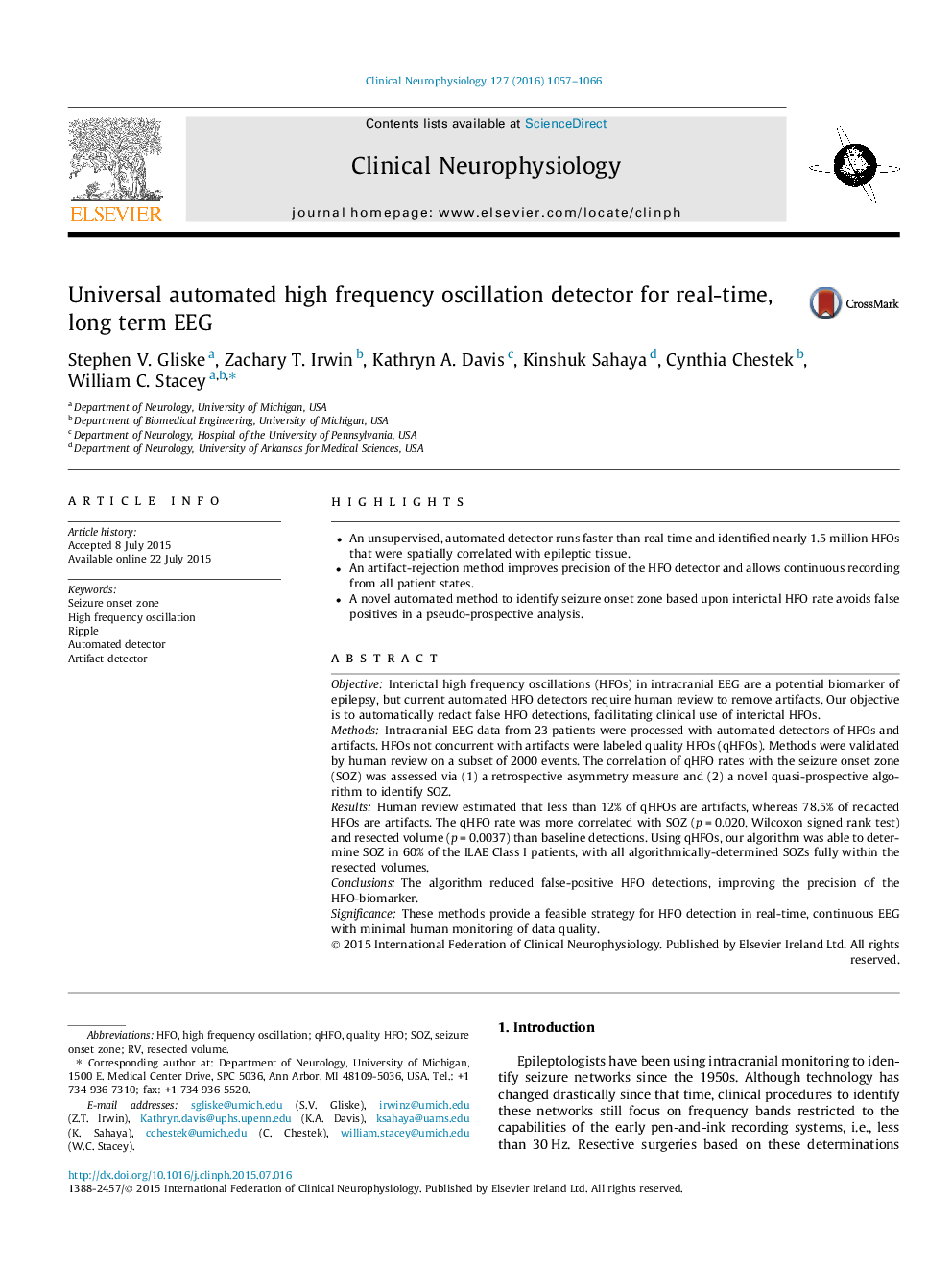| Article ID | Journal | Published Year | Pages | File Type |
|---|---|---|---|---|
| 6007517 | Clinical Neurophysiology | 2016 | 10 Pages |
â¢An unsupervised, automated detector runs faster than real time and identified nearly 1.5 million HFOs that were spatially correlated with epileptic tissue.â¢An artifact-rejection method improves precision of the HFO detector and allows continuous recording from all patient states.â¢A novel automated method to identify seizure onset zone based upon interictal HFO rate avoids false positives in a pseudo-prospective analysis.
ObjectiveInterictal high frequency oscillations (HFOs) in intracranial EEG are a potential biomarker of epilepsy, but current automated HFO detectors require human review to remove artifacts. Our objective is to automatically redact false HFO detections, facilitating clinical use of interictal HFOs.MethodsIntracranial EEG data from 23 patients were processed with automated detectors of HFOs and artifacts. HFOs not concurrent with artifacts were labeled quality HFOs (qHFOs). Methods were validated by human review on a subset of 2000 events. The correlation of qHFO rates with the seizure onset zone (SOZ) was assessed via (1) a retrospective asymmetry measure and (2) a novel quasi-prospective algorithm to identify SOZ.ResultsHuman review estimated that less than 12% of qHFOs are artifacts, whereas 78.5% of redacted HFOs are artifacts. The qHFO rate was more correlated with SOZ (p = 0.020, Wilcoxon signed rank test) and resected volume (p = 0.0037) than baseline detections. Using qHFOs, our algorithm was able to determine SOZ in 60% of the ILAE Class I patients, with all algorithmically-determined SOZs fully within the resected volumes.ConclusionsThe algorithm reduced false-positive HFO detections, improving the precision of the HFO-biomarker.SignificanceThese methods provide a feasible strategy for HFO detection in real-time, continuous EEG with minimal human monitoring of data quality.
